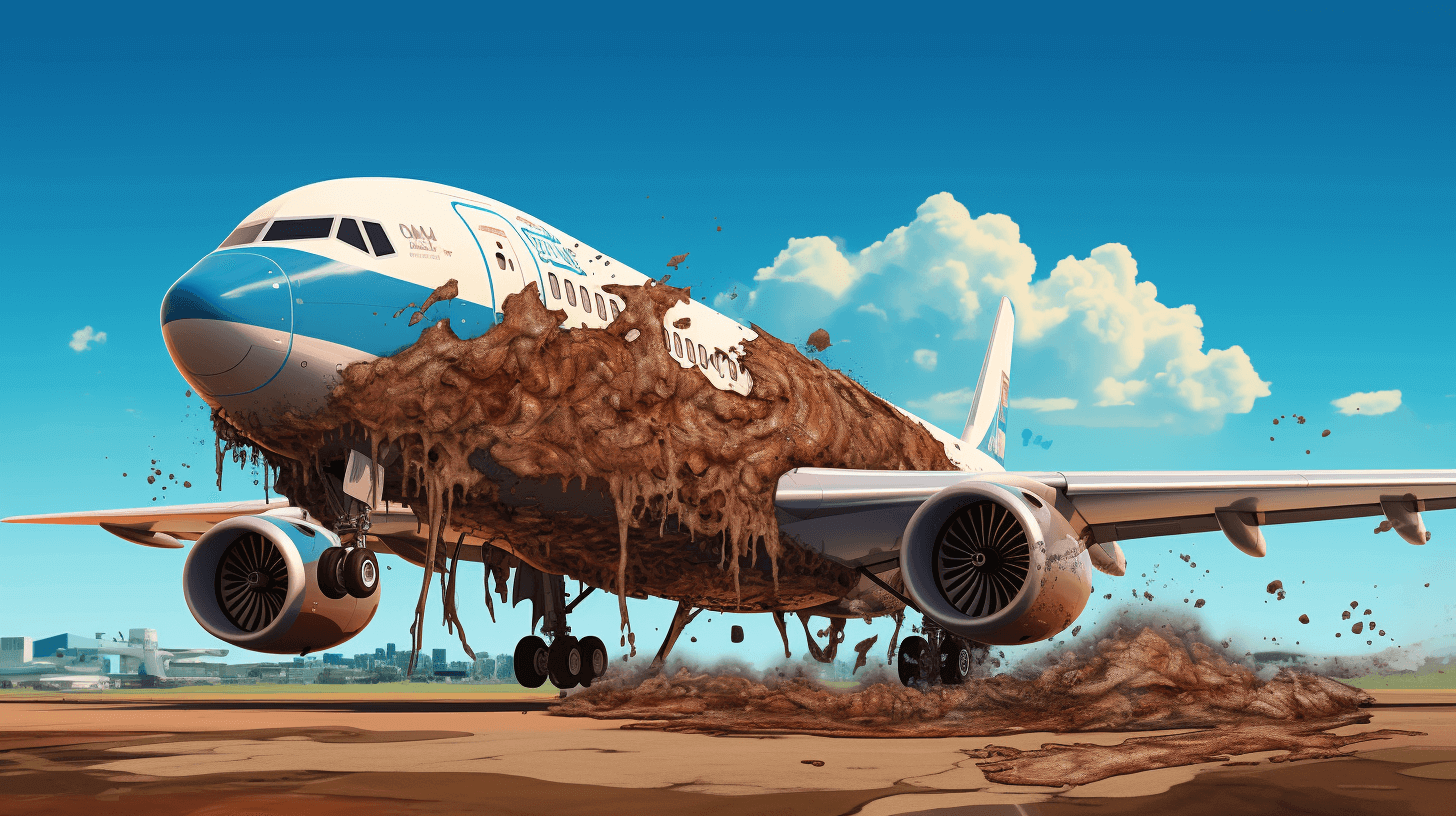The future of travel could be powered by crap!
A pioneering aviation company has successfully developed a groundbreaking type of jet fuel made entirely from human sewage. Chemists at a laboratory in Gloucestershire have transformed waste into kerosene, marking a significant leap in sustainable aviation.
James Hygate, the CEO of Firefly Green Fuels, (or as we like to call it – The Tesla of Poo) expressed the company’s intention to utilize a low-value feedstock that is abundantly available. Hygate highlighted, “We wanted to find a really low-value feedstock that was highly abundant. And of course poo is abundant.”
Independent tests by international aviation regulators have revealed that this innovative fuel is nearly identical to standard fossil jet fuel.
Poop fuel has a zero-carbon footprint
Collaborating with Cranfield University, Firefly’s team assessed the fuel’s life cycle carbon impact. Their findings indicated that Firefly’s fuel boasts a remarkable 90% lower carbon footprint compared to conventional jet fuel.
Hygate emphasized that while the new fuel is chemically similar to fossil-based kerosene, it is a “fossil-free fuel” as it contains no fossil carbon. Flying contributes to around 2% of global carbon emissions, a figure steadily growing. With the aviation industry facing the challenge of reducing its carbon footprint, the quest for greener kerosene alternatives has become a global priority.
The journey toward sewage-based jet fuel began when Hygate, operating on a small farm in Gloucestershire, initially converted rapeseed oil into biodiesel two decades ago. Green Fuels, his company, has since evolved, providing equipment to turn various materials, including cooking oil, into biodiesel for clients worldwide.
The exploration of green jet fuel sources led to experiments with waste oils, food scraps and even agricultural remnants before the breakthrough with human waste.
The experience of flying can always feel like crap so why not power it with crap?
Collaborating with Dr. Sergio Lima from Imperial College, London, the team developed a process that transforms human waste into what they call “bio-crude” – a substance chemically akin to crude oil. The resulting bio-kerosene, with its near-identical chemical composition to A1 fossil jet fuel, is undergoing independent testing at respected institutions.
Hygate acknowledges the challenges ahead, noting that producing enough bio jet fuel from sewage to meet the demands of large-scale air travel will require the annual sewage output of thousands. However, he sees this as an exciting opportunity, emphasizing the potential to meet a significant portion of the legal mandate for sustainable aviation fuel requirements.
While environmental campaigners stress the importance of reducing air travel, the International Energy Agency deems Sustainable Aviation Fuels. These acceptable sustainable fuels include those derived from waste sources as critical to decarbonizing the aviation sector.
No reports if farts can be converted to fuel
Firefly Green Fuels is now seeking funding to build a full-scale demonstrator factory, with Hygate emphasizing the global potential of this innovative solution.
Does this story rumble your tummy or give you a little travel anxiety? We’d love to hear from ya! Shoot us a note! Or drop a comment on this article or any others that flush your senses.
